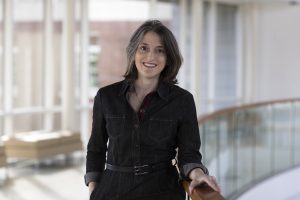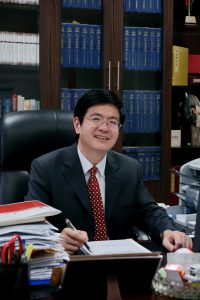Dr. Lia Wei (Lecturer in Archaeology & Museum Studies, School of History, Renmin University, China) will give a series of lectures and workshops supported by the Tianzhu Foundation and Ghent University. The program includes the following topics: landscape painting, ink art, antiquarianism and seal carving. The program is concluded by a lecture on Song dynasty gardens given by Ms. Salome Foltin (University of Tübingen). All lectures and workshops will take place at the interfaculty study center VANDENHOVE (Rozier 1, 9000 Ghent). Admission is free but for the workshops registration is required. For further inquiries please contact Mathieu.Torck@UGent.be.

1. Landscape painting lecture: “Reading and writing the landscape: from physical to literary perceptions”
Venue: Auditorium Vandenhove
Tuesday, February 11, 2020: 1–4 pm
• Topics: conceptual, pictorial and written landscapes
• Discussion: Drawing and Writing
2. Ink art workshop: “Find your way between nature and culture” (registration required!)
Venue: Workshop Room Vandenhove
Monday, February 17, 2020: 4–6 pm
• Session 1: Landscape Analysis & Construction
Tuesday, February 18, 2020: 2–4 pm
• Session 2: Beyond Classification
Tuesday, February 18, 2020: 4–6 pm
• Session 3: Texture Lines & Calligraphic Portraits
3. Antiquarianism lecture: “Future in the Past: printing and carving before and after writing”
Venue: Auditorium Vandenhove
Tuesday, February 25, 2020: 5–6 pm
4. Seal carving workshop: “Connect sign and matter in three steps” (registration required!)
Venue: Workshop Room Vandenhove
Monday, March 2, 2020: 3–6 pm
• Session 1: Etymological Research and Calligraphic Models
Tuesday, March 3, 2020: 3–6 pm
• Session 2: Carving and Printing
5. Lecture by Salome Foltin (M.A. Department of Chinese Studies, University of Tübingen): “The Literati’s Pastime: Visual Renderings of Sima Guang’s 司馬光 (1019-1086) Garden in Ming Dynasty”
Venue: Auditorium Vandenhove
Tuesday, March 3, 2020: 6–7 pm

 Within the framework of his research stay at Ghent Centre for Buddhist Studies,
Within the framework of his research stay at Ghent Centre for Buddhist Studies,